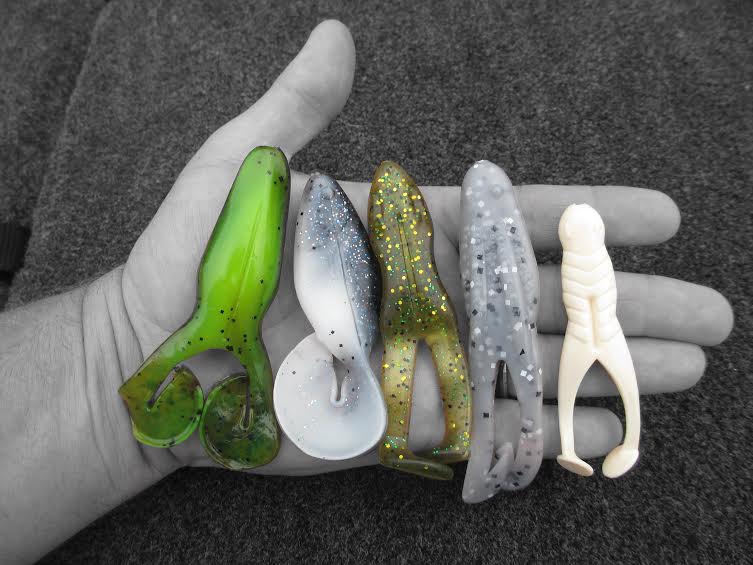Soft Body Frogs: Everything You Need to Know
"Soft-body Frogs" is such a huge category but is often overshadowed by Hollow-Bodied Frogs. Let's start with why you need them and then I'll give a more detailed definition of what they are.
When you think of soft-body frogs think "soft buzzbait". These are the 4x4, go anywhere, do everything, come back unscathed, topwater bait. You can throw them through tullies, over slop, on timber, in grass, and they will paddle their way back to the boat. When the cover gets nasty, when you get tired of picking grass off hooks, out of blades, or dealing with snags, its time for the soft-body frog.
So what are they? First off, its a plastic bait that is solid-bodied. Second, it has one or more "kicking" feet that help the bait rise to the surface and create action as it is steadily retrieved on the surface. Third, it has no additional appendages or it becomes a "creature bait". Lastly, it has no hook. It will need to be texas-rigged with some sort of after-market hook.
Most soft plastic brands now produce a soft-bodied frog. So what makes one better than another? It comes down to two variables: Sound and Speed.
From Left to Right: Strike King Rage Tail Toad, Rage Tail Shad, Stanley Ribbit, Zoom Horny Toad, Sizmic Toad
Each frog has a unique sound and action. Its important to explore different "sounding" baits to find what your fish want. As a rule of thumb the baits with thicker feet (Rage Tail for example) will create a louder, more violent sound while those with thin feet (Horny Toad for example) tend to be much more subtle.
Additionally, the thicker the feet on a bait the more quickly they must be retrieved to create the desired sound. If the bait it making a subtle sound it can generally be retrieved much more slowly than a loud bait and still make the proper sound. This is so often overlooked and is CRITICAL to why some baits get bit more than others. We're so keyed on sound and action we don't even notice that one bait has to go nearly twice as fast as the next. No wonder the bass aren't eating all the baits, all the time!
You'll need to explore a few models to find what works best on your waters but a great place to start is the Rage Tail Toad, Zoom Horny Toad, and Stanley Ribbit. These 3 baits will cover the gamut of sound and speed so you can get a feel for what your bass prefer and you won't break the bank trying to dial in the pattern.


